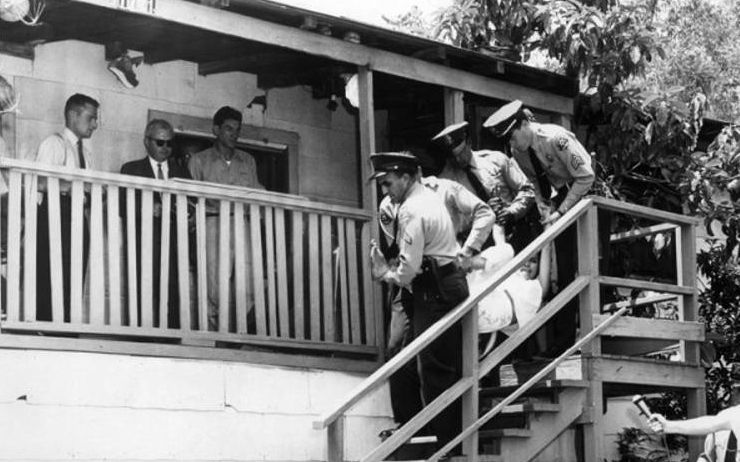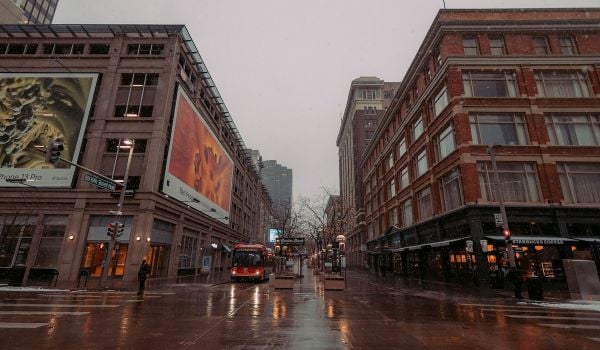Eleanor Sharpe recently started using a metaphor when talking about racial justice with her students at Temple University, where she is an adjunct professor for planning and community development. It’s not a metaphor she came up with herself, but it resonated with her.
“I told my students it’s like somebody built a house and did not follow any of the [Americans with Disabilities Act] requirements, so people with disabilities don’t feel welcome,” Sharpe says. “We’ve inherited the house, and now we’re here, so how do we fix it to ensure that all are welcome?”
It’s a powerful metaphor, Sharpe says, because it cuts past the fear and guilt that sometimes comes with talking about racial inequity, without absolving the current and future planners in the room from the responsibility of doing something about it. Today’s city planners, whether they realize it or not, have inherited zoning ordinances and comprehensive plans and building codes and built environments that generations of predecessors have infused with implicit and sometimes very explicit racism.
That racist inheritance falls squarely on Sharpe’s shoulders. In addition to teaching, she’s the head of the Philadelphia City Planning Commission. That racist inheritance in Philly is painful, but Sharpe says ignoring the true nature of that inheritance only serves to perpetuate its outcomes — Black versus white disparities in wealth, income, health outcomes and life expectancy, incarceration rates, even the average temperature of Black versus white neighborhoods. Planning isn’t the only contributing factor, but Sharpe believes it is definitely a powerful factor contributing to all these disparities.
“Our society is structured around white supremacy,” Sharpe says. “It’s not a debate, but there’s this fear to acknowledge it. That fear serves the retention of the systems that are not working. If you don’t know you’re working in a racist system, without even acknowledging it you’re supporting its goals.”
But some of the most frustrating denial or ignorance of planning’s racist inheritance comes from inside the planning profession itself, still a predominantly white profession. That’s why Sharpe is one of 20 planning directors around the country who recently released a joint statement acknowledging the role of city planning in creating and maintaining systemic racism and segregation, while also inviting their peers around the country to join them in efforts to reverse that.
“This group of planning directors is committed to recognizing what has happened in the past and we’re committed now to doing something about it going forward,” Sharpe says.
Every fall, a group of around 30 planning directors from major cities across the country convenes in Cambridge, Massachusetts, to network and talk shop. While last year’s in-person meeting was moved to a virtual setting because of the pandemic, it was a deeper discussion than usual because of so much else — from the racial inequities of the pandemic and its economic fallout to the uprisings around George Floyd, Breonna Taylor, Ahmaud Arbery and other Black people dying at the hands of police officers.
“I realized we were living history on a daily basis, a period 30 years from now everyone would look back on,” Sharpe says. “What role do we [as planning directors] want to play in history? Do we just want to sit back and be silent? The question becomes what do we do about it now. Lots of cities have been working on this, how do we shine a light on their work, how do we say we’re not going to let this time pass without saying we left a mark and how do we do that in a way that’s genuine.”
After last fall’s discussions, a subset of that 30 began drafting a statement that owns up to the history of planning departments and their contributions to racial inequity in cities today.
It’s nothing others haven’t already pointed out for decades. The history of planning departments signing off on building highways through the hearts of Black neighborhoods or using eminent domain to dispossess Black families of their homes is well known. But as a group, the signatories to this joint statement want to recognize that planning directors have gaslit community members about the role of planning departments in creating and perpetuating racial inequity — or kept those roles hidden beneath a thicket of bureaucracy. It’s sowed a lot of distrust.
“Trust in government is at an all-time low right now,” says Peer Chacko, chief planning officer & director of the Dallas Planning & Urban Design Department. “It’s important for individuals in government to say they’re doing something because they believe it’s the right thing to do.”
In some ways this joint statement and its signatories are later arrivals to the party. The American Planning Association spent a few years convening its Planning for Equity Policy Guide Working Group, co-chaired by planners Lynn Ross and Susan Wood. (Ross is also a Next City board member). That working group produced the Planning for Equity Policy Guidebook, ratified by the association’s board in 2019.
Blackspace, a collective of Black planners, architects, artists, and designers with chapters in five cities, emerged in 2015 as a platform for exploring and advancing ways of supporting racial equity. Sharpe invited Blackspace members to Philadelphia for a training session with her staff. “Our biggest takeaway was we want to build trust with community members,” Sharpe says. “It’s so eroded, but why would [community members] trust us given the history.”
The signatories to the new joint statement are also realistic about the limitations they each face.
As director of Louisville Metro Planning and Design Services, Emily Liu leads a planning department and commission in a region with a consolidated county and central city government. It means her one planning department has to deal with dozens of local legislative bodies.
“These conversations can be very difficult with suburban cities,” Liu says. “But they do have some younger residents who are eager for something to do.”
Or take Denver, where, with support from the mayor and the city planning department, city council had recently voted 11-2 to lift a restriction on more than two unrelated people living in a home — one of the lowest group-living limits for a metro of its size in the country. That change is now facing a ballot initiative this fall to determine whether it will be overturned. Some residents are at risk of eviction if voters overturn the change, according to The Denver Post.
“We’re talking about repairing systemic laws that have oppressed certain people for decades,” says Laura Aldrete, executive director of Denver Community Planning and Development. “Planning in Denver is still a mostly white and male profession, so part of this pivot is to say that this matters and so how do we signal to folks, new planners, younger professionals about why we care.”

Oscar is Next City's senior economic justice correspondent. He previously served as Next City’s editor from 2018-2019, and was a Next City Equitable Cities Fellow from 2015-2016. Since 2011, Oscar has covered community development finance, community banking, impact investing, economic development, housing and more for media outlets such as Shelterforce, B Magazine, Impact Alpha and Fast Company.
Follow Oscar .(JavaScript must be enabled to view this email address)
















